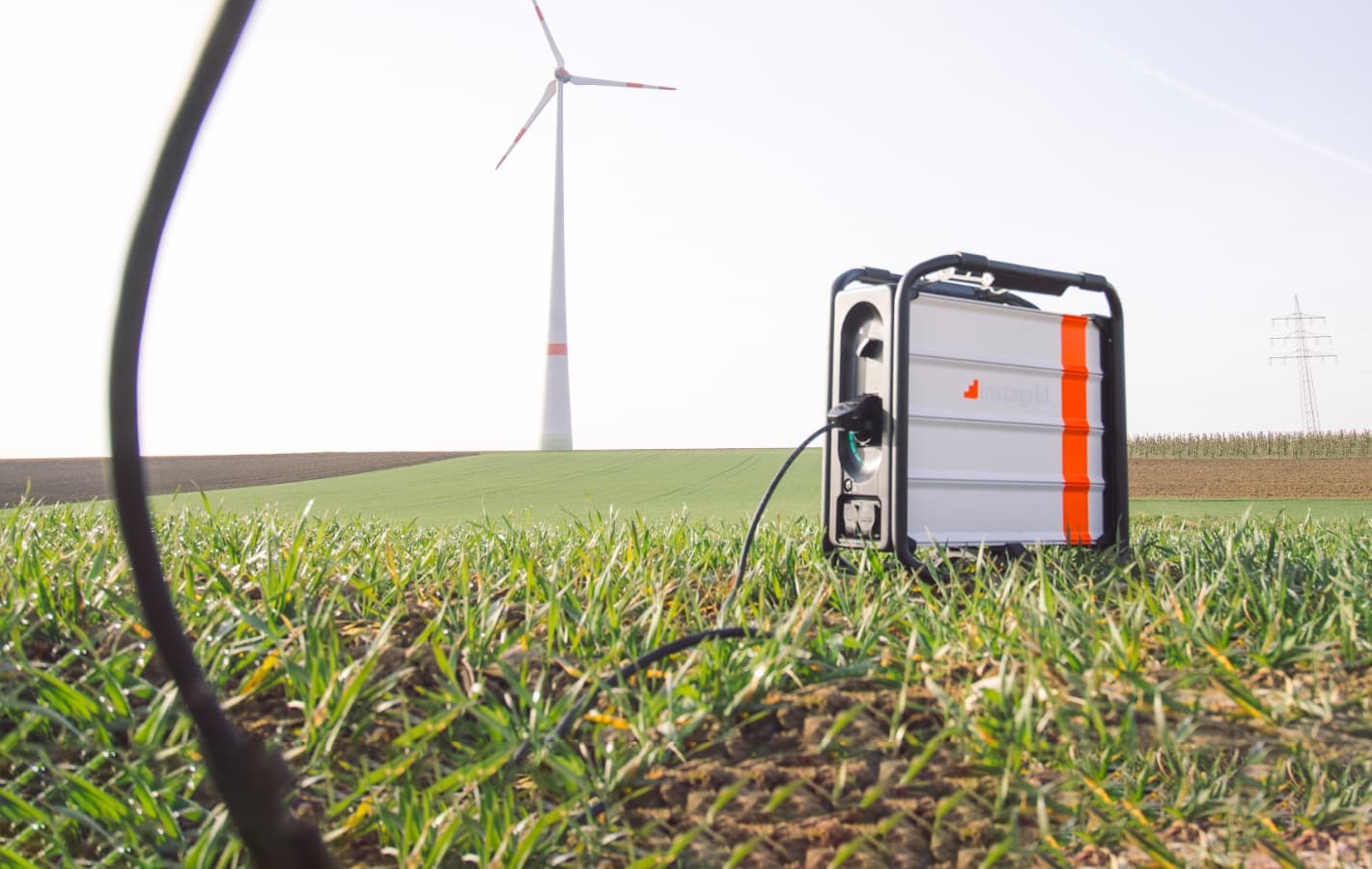Carbon dioxide (CO2) emissions are the main driver in global climate change: in order to slow it down and prevent the worst consequences, emissions need to be cut in each field. Countries, companies, and individuals can all have an impact on the matter through their own strategies and different actions. The long-term strategy of the EU aims at becoming climate neutral by 2050.
The main sources of CO2 emissions are electricity and heating, agriculture, transportation, forestry, and manufacturing. Energy production as a whole produces 72% of all CO2 emissions in the world. (C2ES)

When considering energy production in mobile work, such as construction, catering, and events, it often relies on combustion generators and energy production by burning fossil fuels. Burning fossil fuels to produce energy is not only one of the most inefficient ways, but also the dirtiest way for the planet. Producing energy by powering a generator with gasoline or diesel, doesn’t only produce CO2 emissions, but also PM (particulate matter), NOx, and NMVOC emissions.
For example, if you are running a 4-liter generator for your daily work, and refilling it every second day, in a year it is producing nearly 2 000 kg of CO2 emissions. This amount of CO2 emissions corresponds to driving nearly 17 000 km with a passenger car – with 17 000 km of driving, we could make three roundtrips from our Helsinki office in Finland to our Ludwigsburg office in Germany.
Mobile work without local emissions and smaller carbon footprint
Powering your work with instagrid enables you to choose the source of energy production. Charging the instagrid power system with renewable energy (e.g. solar, wind) will have the biggest positive impact on your carbon footprint. But even if you would charge the battery with the dirtiest source of energy, coal, it would still help you decrease CO2 emissions considerably when compared to burning diesel or gasoline.
CO2 emissions from the most environmental-friendly energy sources, solar, and wind, emit around 4-6 g CO2/kWh. The CO2 emissions from coal as an energy source are 109 g CO2/kWh. (CarbonBrief) These are all still significantly lower than the estimated emissions from a diesel generator: 1,27 kg CO2/kWh.

No matter what the source of energy is used for charging – instagrid will be a more environmental-friendly option than diesel or gasoline-powered generators. In addition, instagrid power system will not emit any local emissions. Your local CO2 emissions stay at zero, and also local PM and NOx, the emissions with a concern to people’s health, are eliminated completely.
Calculate how much you can reduce your CO2 emissions with instagrid
Sustainability as a self-evident design value
With the instagrid product we want to help you to be more sustainable in your work – but also to develop the product from the beginning to end with sustainability as one of the core values.
It all starts with measuring and being aware of our product environmental footprint. Life cycle assessment is a technique to quantify the environmental impacts of a product over its whole life cycle. At instagrid, we follow the ISO standards for our product LCA. A holistic life cycle assessment looks at material extraction, processing, transportation, product use, and eventually disposal. This approach helps to avoid simply shifting environmental impacts from one life cycle phase to another.
Product design and life cycle thinking throughout the production are required components for the successful recyclability of batteries. Our product design process aims to create a product, which is robust in use, replaceable during its lifetime, and recyclable at the end of life. We minimize the components used in our battery system and avoid the permanent fixing of different materials. This makes the separation and recycling of different materials easier and more efficient.
When it comes to the responsibility of the sourced materials, we follow the OECD due diligence guidance for a responsible supply chain of conflict minerals. Where possible, we prefer non-toxic, sustainably managed renewable, or recycled materials that have a lower environmental impact, and we conform to RoHS (Restriction of Hazardous Substances) and REACH (European Union regulation for chemical substances) compliances. To further minimize our CO2 footprint, for example, the housing of instagrid battery is made of recycled aluminum. When using recycled aluminum, instead of virgin one, the CO2 footprint of the housing can be reduced by 48%. Read more about our battery sustainability from here.
I would like a callback
Our experts can advise you on any questions about buying or using Instagrid. Please enter your name and telephone number in the form on the right and we will contact you via telephone shortly.
